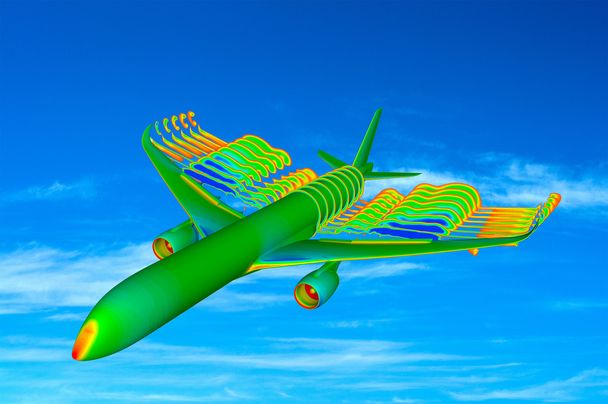Is quantum computing an enabler for the decarbonisation of aviation?

It is still early days for quantum computing. Yet experts agree it is poised to play a key role in sectors ranging from secure communications to banking and aerospace. Quantum’s appeal lies in its ability to overcome computational bottlenecks.
Airbus’ purpose is to pioneer sustainable aerospace for a safe and united world. Although still in development, quantum computers have potential in two areas that are key to realising that ambition: busting the design logjam caused by limits on current computational power in time for the next generation of aircraft, and boosting the efficiency of airline operations.
Here’s a roundup of some of the exciting quantum explorations Airbus is supporting.
Optimisation powered by quantum speed and accuracy
Trajectory optimisation
In the future, quantum algorithms could help optimise an aircraft’s trajectory in real time by taking air traffic restrictions and weather patterns into account. This has obvious safety, economic and ecological benefits.

Flights operate in a dynamic environment affected by an intractably large number of variables, especially during climb-out. The speed and accuracy of calculations are key. Quantum algorithms may be able to outperform current high-performance computers for each.
To this end, in 2023 Airbus’ Silicon Valley innovation centre Acubed carried out a study into quantum trajectory optimisation.
Efficient cargo loading

Half of global airfreight travels onboard passenger flights. Filling cargo containers and then fitting them into the hold of a jetliner is like a giant game of Tetris. Space is at a premium, and the loading of each container must be just so. If the overall centre of gravity in the hold is off, the aircraft will burn more fuel. If the cargo is stacked too far to the left, the left-hand engine has to work harder, consuming even more fuel.
Like trajectory optimisation, cargo loading is fraught with constraints. Quantum computers leverage the so-called ‘knapsack problem’ to calculate an optimum solution for loading packages into cargo containers, and the containers into the hold. In 2022, Airbus performed a use case demonstrator using IonQ’s quantum computer.
To give an idea of the challenge loadmasters face, organising just 20 containers each stuffed with 30 packages in the hold produces a ‘solution space’ – the set of all solutions to a given problem – that exceeds the total number of particles in the universe. No existing computer or analytic solution can solve that puzzle accurately.
Mimicking nature: What happens when molecules collide?
Fuel cell simulation
Hydrogen-powered aircraft produce no carbon dioxide or nitrous oxide emissions during flight. They release only water vapour into the atmosphere.
There are two options for designing hydrogen propulsion systems: burning the gas directly in a turbine engine; or installing fuel cells which use hydrogen to create electricity.

Airbus has joined forces with the automotive sector to advance fuel cell development for aeronautic applications. However, the cells must be lightweight as well as powerful enough to get a plane off the ground.
This combination relies on some complex chemistry. Electrolysis requires a catalyst to get going. Platinum is particularly suitable for this purpose, yet relatively expensive. The alternative is to create alloys – platinum with cobalt or nickel, for example – which also show a higher beginning-of-life performance than pure platinum. However, lab testing these alloys can be an expensive task.
Instead, alongside colleagues at BMW Group, Airbus researchers have shown for the first time that quantum computing can perform atomic-level reaction modelling. Harnessing quantum’s exponential power that is beyond the reach of today’s computers, engineers can model the relative catalytic behaviour of each alloy. Their observations contribute to propulsion and design choices that will one day have a significant, favourable impact on aerospace’s carbon footprint.
Computational fluid dynamics: Where maths, physics and computer science intersect
The first port of call when designing a new aircraft is often computational fluid dynamics, or CFD. This sophisticated digital simulation of airflow around an airframe informs its shape and aerodynamic efficiency. Today, CFD is performed by energy-intensive, high-performance computers (HPC) and it has become a bottleneck in the aircraft design cycle as HPCs reach their maximum processing power.

Quantum computing is able to operate on a far larger canvas, or mesh, permitting CFD calculations to be performed at an exponentially higher scale. It has the potential to break the design bottleneck for future aircraft.
CFD is an area under study in the Quantum Mobility Quest and through EQUALITY, a European consortium which counts Airbus as a member. The consortium is dedicated to developing quantum algorithms in order to solve a set of ‘paradigmatic’ industry problems.
As these examples show, quantum computing clearly has the potential to support aviation on its decarbonisation journey.
Airbus and the BMW Group both recognise quantum’s promise. The companies joined forces in 2023 to launch the Quantum Mobility Quest. The Quest’s aim is to team up with leading players to accelerate and mature quantum solutions that could one day help the industry solve its most complex challenges.



